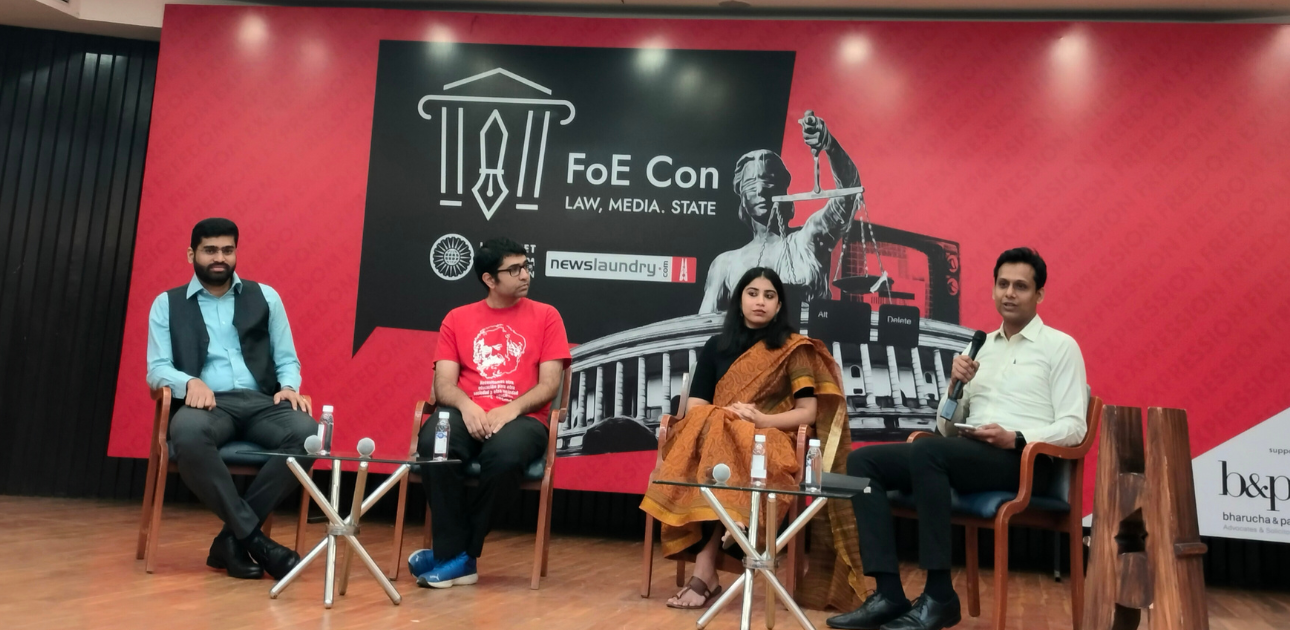The increase in legal reporting, in particular of court proceedings, is good for democracy and accountability, but how do we ensure that complex legal matters are not lost in translation, and the judiciary remains worry-free of media and kangaroo courts? Panellists examine the different dimensions of this pertinent question.
—
“YOU may want to be forgotten, but the State will not forget you,” declared the government counsel during an argument in a case. He was referring to the welfare State and its pledge to not leave a single citizen behind, but when this quote was presented in the form of a live tweet, it was lost in translation and sounded “the most sinister”, according to constitutional law scholar and author Gautam Bhatia.
Bhatia came up with this humorous example of things that are lost in translation during a panel discussion on ‘Writing on the Judiciary: Making legal reporting accessible’ at the second edition of the FoE Con on Saturday, co-organised by the non-governmental organisation Internet Freedom Foundation and media watchdog NewsLaundry.
He was speaking about the disadvantages of live tweeting, in which the context of the legal news is often lost. His co-panellists were Manu Sebastian, managing editor at Live Law and Apoorva Mandhani, assistant editor at The Print.
The session was moderated by lawyer Apar Gupta, who is the co-founder and executive director of the Internet Freedom Foundation.
Gupta asked Bhatia if there is any intersection between law and journalism in terms of legal blogging.
Bhatia answered, “…[I] was inspired by the culture of legal blogging in the [United States]… The purpose is that you analyse judgments. You extract the reasoning and critique, and so on. In that sense, it is extending your role as a lawyer into the sphere of legal writing.”
He added, “If you look at Indian courts— the judgments— they miss out on a whole lot. There is so much that happens in the court that is not reflected in the judgment. So much of the impact takes place through interim orders— even one-line interim orders. The refusal to issue a stay through an innocuous one-line order actually will make a massive difference to [the protection and exercise] of one’s fundamental rights…
“Earlier, journalists were not allowed to come to the forefront… There were no mics… In that sense, legal blogging was journalistic. It is a good thing that this has changed. Journalists can now go to the front … mics are being used. They can tweet live,” he continued.
Sebastian spoke about Live Law and how it is contributing to accessibility in terms of legal reporting.
He said, “Legal journalism is catering to a wider [audience]… Courts have now become a battlefield on a lot of different issues… Legal reporting is no longer consumed by lawyers and judges alone. It is consumed by the larger public.
“There is a greater public interest in court developments … and the coverage has increased. We had to change our reporting style. As our audience became more general, we had to choose a simpler language.”
Mandhani spoke on the impact of live streaming of court proceedings on the general public.
She said, “Gujarat High Court was the first to allow live streaming. I went to the first video the Gujarat High Court uploaded… I went through the comments… I saw people were surprised— out of their minds… Their idea of the courtroom had been very Bollywoodesque and live streaming actually managed to change that.”
Mandhani added that the need for accessibility is not just limited to the Supreme Court and high courts. According to her, it is equally important for trial courts because that is where law takes form, and where procedure is actually applied.
Sebastian added that even as live streaming has started gaining ground, the audience and traffic on their site has kept increasing. Giving the example of the live streaming of the hijab matter in the Karnataka High Court, he described how their live tweeting of the hearing got a lot of engagement as people were interested to read about court proceedings.
Bhatia spoke on the impact of courts being compelled into greater media interaction as a consequence of live streaming and tweeting.
He said, “In other [legal] systems … there is an internal check… If you look at the Supreme Court of Kenya, where constitutional cases are broadcast … there is still a certain kind of expected way in which lawyers and judges interact, which makes it difficult to take a clip out of context and use it to fuel something because you are bound to a certain kind of legal language. For example, in the Maharashtra case, you will argue Tenth Schedule in a certain language and vocabulary. The problem is that, in our courts, that tradition has long been lost.
“Recently, somebody brought to the court a case for legislating [Uniform Civil Code]. If someone tried that in the [United States], Kenya or South Africa, you will never get to court. You will be dismissed in the chambers.
“If the court is saying no in such cases, then that refusal is used to declare the court pro-Muslim or pro-Christian.”
Bhatia also stated that increased accessibility of courts sometimes leads to court proceedings being misrepresented by the media to fuel passions.
He recalled a recent hearing in the hate speech case, where Solicitor General Tushar Mehta had referred to certain speeches made by a DMK spokesperson calling for the “butchering of Brahmins”, arguing that it should be considered hate speech.
Upon hearing this, Justice Joseph had smiled and when SG Mehta had said it was no laughing matter, Justice Joseph had asked Mehta if he knew who Periyar was, apparently referencing the vast anti-Brahmin rhetoric of the father of the Dravidian movement, to underline the fact that such speech was commonplace among the proponents of the Dravidian movement.
Bhatia added, “There were articles saying Supreme Court Justice [K.M.] Joseph is justifying genocide… This is just misreporting.”


